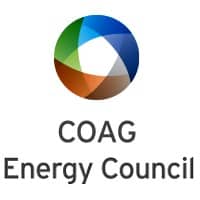Australia’s energy ministers have given the go ahead to further develop the National Energy Guarantee (NEG). The decision was made at today’s meeting of the COAG Energy Council, at which Dr Kerry Schott, chair of the Energy Security Board (ESB), presented a detailed proposal for the NEG.
The Energy Council agreed the ESB should now “consult with jurisdictions on the specific details of the design”.
The decision comes after a two-month consultation process. This resulted in a discussion paper prepared by the ESB outlining the general direction of the NEG.

Detailed design document outlines retailer’s roles
The ‘National Energy Guarantee: High Level Design Document’, released today, adheres to two central features of the original NEG proposal.
The first is that the NEG requires energy retailers to provide reliable power. “[The NEG] will require retailers to support a range of different generation technologies through their contracting,” the document states. “Increased contracting in deeper and more liquid contract markets is expected to reduce the level and volatility of spot prices.”
The ESB identified a number of key steps to a reliable electricity supply, including reliability forecasting by AEMO. If the reliability standard is unlikely to be met, AEMO will identify the size of any ‘gap’ in supply/demand response.
If a reliability ‘gap’ is identified in the forecasts, the market would be expected to react. This could take the form of investment in new capacity or to offer additional existing capacity to the market. Some of this could come from battery storage from renewable generation sources.
If, three years from the period in question, a material ‘gap’ continues to exist or a new material ‘gap’ emerges, the reliability obligation will be set to trigger. Retailers may then be expected to demonstrate future compliance. An ‘independent entity’ will need to approve a request from AEMO that the reliability obligation on retailers be triggered.
If the reliability obligation is triggered, retailers and large customers will need to assess their likely share of system peak demand and later contracts to achieve this.
Penalties will be assigned to retailers that are assessed to have fallen short of their reliability obligation. These penalties will include at least some of the cost of procuring necessary resources via an enhanced RERT/Strategic Reserve.
Compliance with national emissions targets
The second requirement for a registry where energy retailers record their compliance with emissions targets set annually by government. In addition, for each compliance year, each retailer will be required to meet the electricity emissions target in respect of its own load in that year.
Retailers can use their existing contracts, or enter into new ones, to obtain the right to assign generation and any associated emissions for the purpose of the emissions reduction requirement. The retailer would then submit to the registry the volume of output from a generator to which they have obtained the rights.
COAG Energy Council Ministers agree to meet again re NEG
COAG Energy Ministers also agreed to convene again in June to discuss the progress of the detailed design.
Energy ministers who flagged concerns with the NEG still have four months to push for changes before the federal government’s deadline in August.
The development of the detailed design will also include opportunities for stakeholder feedback.












































